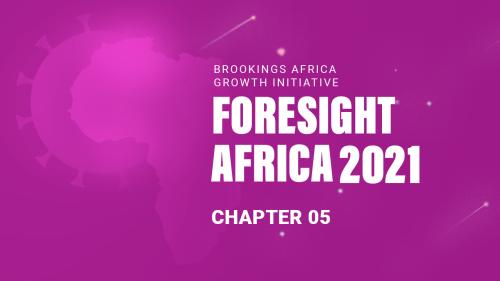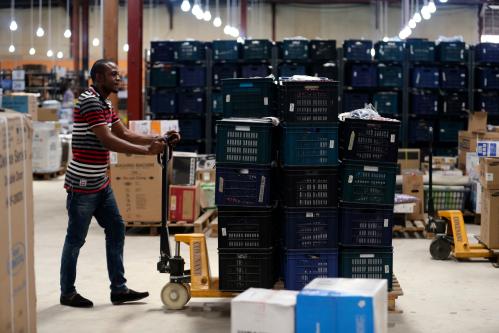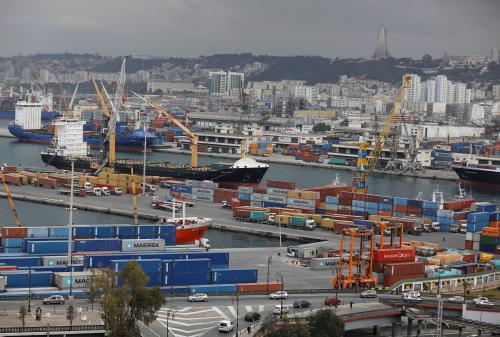On January 1, 2021 the African Continental Free Trade Area (AfCFTA) went into force after a 6-month delay due to the COVID-19 pandemic. The overarching goal of the AfCFTA is to facilitate intraregional and international trade among African nations by reducing costly barriers to that trade. Indeed, as AGI Senior Fellow Landry Signe writes, “UNECA has predicted [the AfCFTA] will raise intra-African trade by 15 to 25 percent, or $50 billion to $70 billion, by 2040, compared to an Africa without the AfCFTA.” UNECA also predicts that real income will rise by 7 percent by 2035. Notably, though, experts predict these gains to manifest unevenly across a number of variables, such as geography, gender, skill level, and overall policy implementation.
For example, the World Bank estimates that the AfCFTA’s positive impact on wages for men, women, and skilled labor will be most prominent in North Africa, with wages for each group rising by 0.79, 0.93, and 0.93 percentage points year-on-year, respectively (Figure 1). Notably, wage gains for unskilled workers will be highest in East Africa. Conversely, West Africa is projected to experience the weakest wage gains across all indicators, excluding female workers.
Figure 1. AfCFTA’s impact on wages by geography, labor skills, and gender
Source: “Foresight Africa: Top Priorities for the Continent in 2021, Chapter 5: Continental Integration: Uniting a revitalized Africa,” The Brookings Institution, 2021.
These regional averages do mask within-region variations: In fact, the World Bank predicts that real income gains will differ widely across countries (Figure 2). In other words, some countries will benefit more than others. Côte d’Ivoire is poised to realize the strongest income gains, followed by Zimbabwe and Kenya.
Figure 2. Real income gains from AfCFTA by country and trade policy
Source: “Foresight Africa: Top Priorities for the Continent in 2021, Chapter 5: Continental Integration: Uniting a revitalized Africa,” The Brookings Institution, 2021.
Importantly, these gains won’t come from just the tariff liberalization enshrined in the free trade agreement. Other free trade policy mechanisms promoted by the AfCFTA, including trade facilitation and reduction in nontariff barriers, will contribute to these gains. In fact, the World Bank predicts that, across the continent, trade facilitation will be the source of most of the free trade area’s real income gains, followed by reduction in nontariff barriers and tariff liberalization. Nonetheless, each country experiences the impact of these trade policies differently. For some, such as Morocco and Senegal, the reduction in nontariff barriers will be the most significant source of real income gains. However, for the countries with the highest estimated real income growth, trade facilitation will be the most prominent source of real income gains.
For more on the AfCFTA, read “Quantifying the impact on Nigeria of the African Continental Free Trade Area,” listen to AGI Senior Fellow Landry Signe discuss “How will the Continental Free Trade Area transform Africa?,” and watch “Green trade under the AfCFTA: The role of AU-EU partnership.”









Commentary
Figure of the week: The African Continental Free Trade Area’s impact on income and wages
December 22, 2021